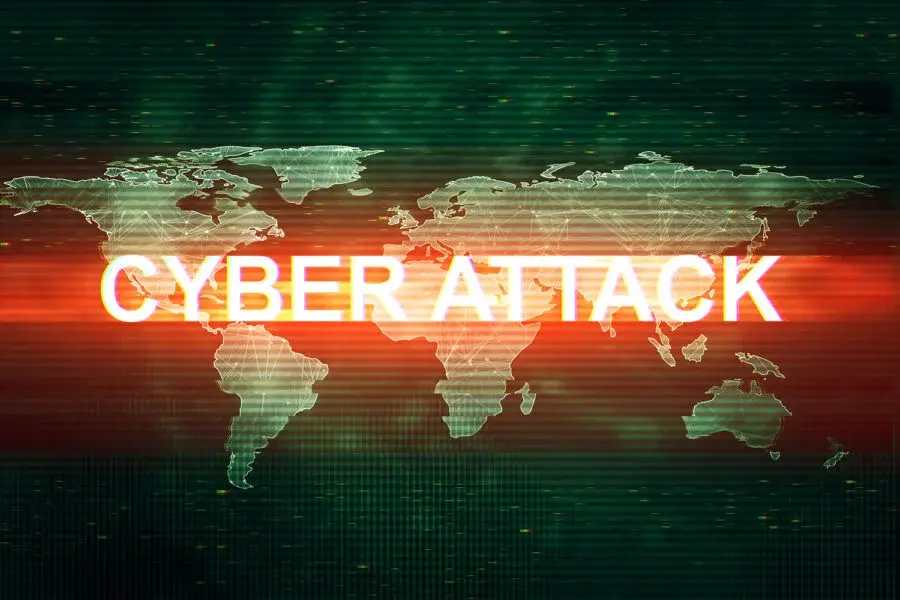According to a recent study, a cyberattack now occurs every 14 seconds. It sounds extreme, but it's real. And the most worrying part isn’t just the frequency—it’s that many of these attacks actually succeed: they steal data, shut down systems, and even cripple entire businesses.
This record-breaking speed goes beyond any previous predictions and makes one thing clear: cybercriminals are getting faster, smarter, and far more dangerous. They’re no longer targeting only large corporations—small and medium-sized businesses, and even everyday users, are now in their sights. In fact, many small businesses never fully recover after a serious attack.
From ransomware that locks up valuable data to phishing campaigns that are increasingly hard to spot, cybercrime has become a constant threat. And experts agree: no one is completely safe anymore.
The Alarming Number: One Attack Every 14 Seconds
Numbers don’t lie—and in this case, they’re pretty alarming. According to a recent report, cyberattacks have increased by 38% in just one year. To put it into perspective: while last year an attack occurred every 19 seconds, today it happens every 14 seconds. That adds up to over 6,000 attacks per day worldwide. Crazy, right?
What’s worse is that this wave of attacks isn’t hitting at random. Certain sectors are taking the biggest hits. The healthcare industry is the most affected, accounting for nearly a third of all reported incidents. Close behind are financial services (28%) and critical infrastructure (19%) such as power grids and water systems. Why? These are high-value targets with sensitive data—and the resources to pay ransoms.
The fact that a cyberattack happens every 14 seconds is a clear sign of how quickly cybercrime is growing globally. Some of the key reasons behind this surge include:
- Massive Digitalization: With the pandemic and the rise of remote work, many companies rushed to digitize their processes—often without putting proper security in place.
- Growth of the Internet of Things (IoT): More and more devices are connected to the internet, increasing the number of potential access points for attackers.
- Lack of Cybersecurity Awareness: Many users and employees still lack proper training in digital safety and best practices.
- Cybercrime as an Industry: Today, cybercrime operates like a full-fledged business, with structures, hierarchies, and highly developed business models.

What types of attacks are dominating the scene?
Ransomware is still the king of cyber threats. It accounts for 41% of all detected attacks, and what’s most concerning is that it no longer just locks your data—attackers now threaten to publish sensitive information if the ransom isn’t paid. This is known as “double extortion,” and unfortunately, it’s proving to be very effective for them.
Phishing has also become much more sophisticated. Cybercriminals are using artificial intelligence to craft emails and messages that look completely real—almost indistinguishable from legitimate ones. Even well-trained employees can fall for them.
Even more troubling are spear phishing attacks. In these cases, attackers take the time to thoroughly research a specific person within an organization, allowing them to send highly personalized and convincing messages. With the right details, their messages look 100% legit—and too often, they succeed.
As you can see, the threat landscape isn’t just complex—it’s evolving fast. Cybercriminals don’t rest, and they’re gaining access to more advanced tools by the day. That’s why staying informed, understanding how these attacks work, and knowing how to protect yourself is no longer optional—it’s absolutely necessary.
Read more: What Is Ransomware? How to Prevent
Why are cyberattacks happening so often?
One of the main reasons is that attacks no longer need a person behind every click. Today, cybercriminals use highly advanced bots that can launch thousands of attacks at once, with barely any human effort. These bots don’t just scan systems and networks for weaknesses automatically—they also learn and adapt on the fly. It’s like having a digital army working 24/7.
Another big factor is that hacking has never been so easy—or so cheap. Tools that used to be handled only by experts are now available on the dark web for just a few hundred euros. There are even step-by-step tutorials and “all-inclusive” hacking services that allow anyone—even with zero technical knowledge—to launch an attack just by following a few instructions. Seriously, it’s like there’s an “Uber for cybercrime.”
The truth is, these attacks are getting faster, more frequent, and a whole lot smarter, and many people and organizations just aren’t ready for them. Cybersecurity can’t be an afterthought anymore. Now more than ever, protecting our data and systems needs to be a part of our everyday routine.
So, How can we protect ourselves?
Cyberattacks are not only more common—they’re also more sophisticated. Automation, easy access to malicious tools, and the use of artificial intelligence are changing the game. While attackers are getting more organized, many companies and users still don’t have a clear protection strategy in place.
The good news? There are definitely ways to get prepared. From the basics—like keeping your devices updated and using strong passwords—to more advanced measures like 24/7 monitoring and a solid data backup and recovery plan.
At TecnetOne, we understand how important it is to protect your data and digital infrastructure. That’s why we offer comprehensive cybersecurity solutions, including a Security Operations Center (SOC), 24/7 monitoring services, automated backups, ransomware protection, real-time threat detection, and much more. Everything is designed to keep your business one step ahead—without added complexity.
Don’t wait to become another statistic. Prevention is the best defense, and at TecnetOne, we’re ready to help you make it happen.


